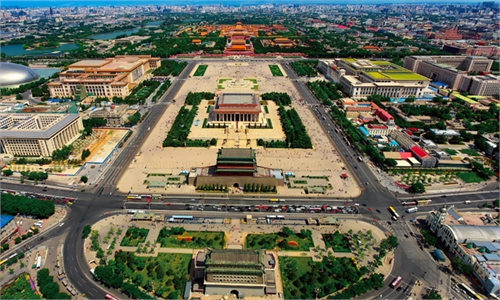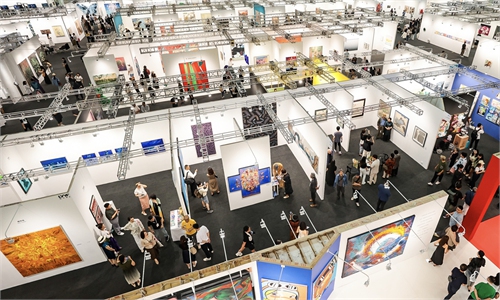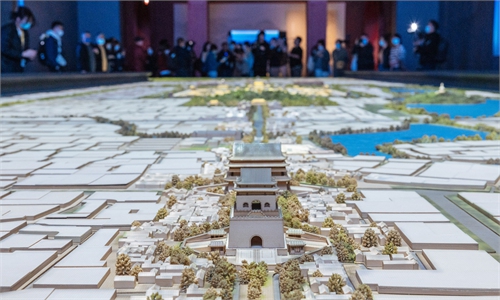ARTS / CULTURE & LEISURE
Digital tech enhances museum experience during summer craze
Beijing Central Axis witnesses tourism boom

A seal engraving exhibition opens at the China Millennium Monument on August 3, 2024 to celebrate the successful application of the Beijing Central Axis as a UNESCO World Heritage Site. Showcasing over 300 artworks, the exhibition allows viewers to immerse themselves in the grand and orderly spatial form of the Beijing Central Axis and experience up close the charm of symmetry and harmony in Chinese aesthetics. Photo: VCG
As the Beijing Central Axis has officially been inscribed on the UNESCO World Heritage List, a renewed enthusiasm for cultural heritage among travelers has sparked a tourism boom in the area. Meanwhile, digital technology has been applied to enhance the experience of visitors to the Central Axis, allowing them to learn about its centuries-old cultural sites in an engaging and immersive way.
A French tourist visiting Beijing told the Global Times that his main reason for coming to China was to "visit various museums" with a tour guide leading him through the exhibits.
To meet the high demand of visitors during the summer and to enhance their experience, until the end of August, several museums in Shanghai will open on Mondays and will extend their opening hours.
Several cultural heritage venues in Beijing have also chosen to extend their opening hours. For example, The Capital Museum will now close one hour later, and the China Film Museum will stagger its closing times while increasing the number of public screenings and educational film sessions, providing high-quality and heartwarming cultural services to visitors.
Among all the attractions, the Brilliant Central Axis digital art exhibition at the Capital Museum has garnered widespread attention.
A visitor surnamed Guo from Xi'an told the Global Times that this innovative approach attracted her children.
"It's rare to get a chance to visit Beijing. China has many immovable cultural heritage sites, and this Central Axis exhibition has been a delightful surprise for both me and my kids," she said.
The exhibition is divided into three sections - Magnificent Central Axis, Cultural Central Axis, and Eternal Central Axis - offering a comprehensive and captivating explanation of the grandeur, historical evolution, and public engagement with the Central Axis, as well as efforts to preserve it.
In the Magnificent Central Axis section, Wang Boqiao, lead designer of the digital art exhibition section, explained to the Global Times that "the current enthusiasm for museums and cultural tourism is mirrored by an interest in digital art."
Wang also noted that in the past museum digitalization merely involved using digital means to present artifacts.
"Now we have evolved into exhibitions that integrate sound, light, and electricity, displaying tens of thousands of artifacts on screens. But that's not sufficient as technology should always focus on contents and the audience experience," he said, adding that digital exhibits should aim to provide an immersive virtual space that transcends time and space.
"We have created a theater-like space for an immersive experience of the Central Axis's seasonal changes, allowing visitors to feel as if they are standing in Dadu (or the great capital). during the Yuan Dynasty (1279-1368) 700 years ago, gazing at the stars from 500 meters up, and witnessing the grandeur and cultural transformations of the Central Axis," Wang said.
Wang emphasized that digital art is not about subverting the old but translating it.
"Our ancestors have created all these things. The new artistic forms translate China's cultural codes through digital art, making them accessible to young people," he noted.
Looking ahead, Wang said he hopes that the application of digital technology in museums can achieve therapeutic effects.
"After the initial novelty of the museum craze wears off, people will still be interested in deep cultural experiences. I hope that through the translation of digital art, not only can people immerse themselves in traditional culture, but can also achieve a new state of being," Wang concluded.



